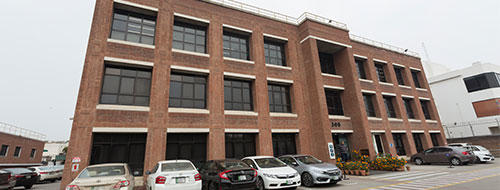Nutrition for life stages
Helping you care for you and your family
As one of the world's largest food company, we work purposefully to promote Nutrition, Health and Wellness of your family.

What is Osteoporosis?
The word osteoporosis means porous bones. It is a disease characterized by a thinning and weakening of the bones.
Osteoporosis affects many more women than men and is a particularly distressing problem for older people.
This condition causes bone to become fragile and results in fractures. It can lead to back pain, humped shoulders, difficulty walking and shrinking in height. Wrist, spine and hip fractures are the most common fractures associated with osteoporosis. Fractures related to osteoporosis are a serious problem that can lead to disability or even death.
Risk Factors of Osteoporosis
- having a slender body and small bones
- consuming a low calcium diet
- having low physical activity
- having menopause before age 45 and having your ovaries removed
- being female
- being deficient in Vitamin D
- being a cigarette smoker
- consuming too much caffeine or alcohol
- having a family history of osteoporosis
- excessive use of some medications (e.g. cortisone, prednisone, anticonvulsants)
- having previous fractures
How Can I Reduce My Risk?
Include calcium in your diet. Individuals over the age of 50 need 1000 to 1500 mg of calcium each day. As you age, your body doesn't absorb calcium as well, so it's very important to have calcium-rich foods in your diet. If you don't get enough calcium-rich foods in your diet, you may require a calcium supplement.
Good sources of calcium are dairy foods such as milk, yogurt and cheese. Calcium is also found in fortified breakfast cereals, fortified soy products, canned fish with bones, nuts, dried figs, dried apricots and dark green leafy vegetables.
Get enough Vitamin D. Calcium will be more easily absorbed by the body when there is Vitamin D present in the body. To get enough Vitamin D, you need to spend some time in the sun so that your body can absorb the Vitamin D it needs to absorb Calcium.

Healthy Heart
Cardiovascular Disease (CVD) is a collective term for the conditions that affect the heart and blood vessels. The most common one is atherosclerosis which is a hardening of the arteries.
There are many factors associated with the development of CVD such as smoking, high blood pressure, high cholesterol, overweight, poor diet, diabetes, insufficient activity, and depression. The factors you can’t change are family history or genes, age and gender.
Healthy heart tips:
- Use margarines made from poly and monounsaturated oils instead of butter
- Remove the fat and skin off chicken and meat, avoid processed meats
- Include egg white, low fat fish in your diet. Choose lower fat dairy products like LOW FAT Milk.
- Avoid fat laden snacks such as pastries and biscuits
- Don’t add salt to cooking and don’t put the saltshaker on the table
- Start the day with wholegrain cereal, oats or baked beans on wholegrain toast
- Snack on fruit and at mealtimes fill half your plate with vegetables or salad
- Consume Green leafy vegetables, tomatoes, cucumber, radish, lemon


